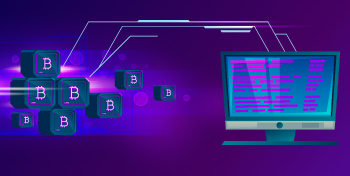The potential advantages and application opportunities of the technology may represent one of the hottest areas for investment and development in the modern technology market. For other emerging technologies, such as the Internet of Things and autonomous vehicles, to function properly, it is necessary to increase the bandwidth and spectrum capabilities. Due to the flow of data produced by each organization (and individual), expanding the capabilities of the digital infrastructure is an imperative for organizations seeking to use this information.
Since organizations around the world are allocating funds and personnel for the implementation of many 5G projects, this may seem like a boon for supporters of private sector participation in the infrastructure of the future. However, a second and closer look reveals the main force that has a huge impact on the development of 5G and related technologies: the process of state spectrum auctions. For example, in the United States (we will always take the United States of America as an example, since there is the most advanced technological side of many issues), so that telecommunications organizations can get access to the spectrum necessary for the development of 5G services, there is only one supplier on the market: spectrum auctions conducted by the Federal Communications Commission.
The auction process is certainly superior to the FCC, which simply distributes spectrum through an opaque process, but, nevertheless, control over this valuable resource by one political entity distorts the market. As a result, mergers and acquisitions in the telecommunications sector are not always conditioned by the realities of the business, but rather are a desire to gain access to the spectrum that other organizations have.
This confusing logic of mergers and acquisitions also leads to antitrust measures directed against organizations, which leads to increased costs, without leading to greater consumer or competitive advantages. Because of these perverse incentives, the goal of most telecommunications mergers and acquisitions is not to attract customers, but to acquire spectrum.
In other words, the lack of competition in spectrum development and strict control over the acquisition process can both distort current operations in the private sector and make the development of new applications more expensive than necessary.
And here’s the question: so what does Libra have to do with it?
Libra’s Connection to Telecommunications technologies

Spectrum is a clear example of how a single state control over the supply of an asset can influence and distort the actions taken by market participants, but the currency is an example of the implementation of this concept in practice. Governments rely on their sole control over the currency to ensure fiscal, monetary and tax sovereignty, but monopolistic control is hardly a guarantee of effective governance. Dozens of examples over the past few decades illustrate the damage that can be caused by the abuse of this single point of control, not to mention the destructive impact of inflationary policies on both purchasing power and the propensity to save.
Competition and consumer choice are always beneficial for consumers, but they are absent both in the case of providing 5G spectrum and in the case of choosing a currency. This harms consumers and organizations and leads to unforeseen consequences that affect the economy as a whole.
In the case of cryptocurrencies, however, the motivation behind this regulatory and government suppression and verification may indicate a different goal: the introduction of this technology into the existing financial apparatus.
Bitcoin has lost much of its luster as a fiat alternative, and other private sector entities have developed and implemented alternatives that are simpler and easier to use for consumers. Amid the increased involvement of the private sector, governments have inevitably become intrigued by how these technologies can be adopted. The Libra initiative could inadvertently give central governments and financial institutions a plan for how this new emerging area can be placed under the aegis of centralized institutions.
People’s Bank of China takes note of

The governments of the United States and China, of course, are at the center of a confusing and large-scale trade dispute, which is so fond of being called a war. The benefits of constantly increasing tariffs are still difficult to assess, but this is not the only story. New technologies, such as 5G, and the potential of blockchain and cryptography for financial services may still be developing imperceptibly, but, nevertheless, there are significant developments in this space.
Technology, not soybeans, is at the heart of the tug of war that has broken out between the world’s two largest economies, and the possibility of a crypto-fiat hybrid underscores the interest of both governments in these new tools. This includes the People’s Bank of China (PBoC), which, to a greater extent than the Federal Reserve System in the United States, is the lever of state policy and leadership.
Several central banks, including regional Federal reserve banks and the Bank for International Settlements, have issued similar statements. But the adoption of this concept in the Chinese banking establishment is noteworthy in no small part because of how accurately the proposed cryptocurrency reflects the structure of Libra.
The former head of the People’s Bank of China, Zhou Xiaochuan, argued that the Chinese state should take measures to further strengthen the yuan in response to the launch of Libra. This follows statements by President Xi Jinping, who openly praised blockchain as a central part of the country’s plan to become a leader in several technology categories in the near future.
Given the central government’s ban on initial coin offerings (ICOs) and many other cryptocurrency-related activities, the launch of a cryptocurrency could seem ironic until no one looks behind the scenes of this performance. The digital currency, announced as DCEP, is supported, controlled and issued by the central bank and potentially reduces China’s dependence on the world reserve currency – the US dollar.
Behind the scenes

Below are three specific ways in which the PBoC plan is largely borrowed from the Libra Association model, and how easily other governments could emulate such a plan if desired.
PBoC: The only official and authorized issuers of this digital currency are the central bank itself and commercial banks approved by the central bank. According to the Congressional Research Service, four of the five largest banks have the government as a major, if not the largest shareholder, which leads to de facto control by the central government.
Libra: The Libra Association will choose which third parties will have the right to redeem and exchange the asset.
PBoC: Based on publicly available information, the PBoC is able to implement and control all wallets used to access the digital yuan. With the exception of experienced institutional investors or programming experts, retail investors and consumers will need approved wallets to access digital holdings.
Libra: The Calibra wallet is connected to both Facebook and the Messenger platform.
PBoC: Since the PBoC is accountable only to the state, and since the government is implementing a social credit system, it is quite reasonable to consider these financial transactions as part of this system.
Libra: As Facebook or any other centralized organization that manages cryptocurrency or a similar product, can guarantee that these financial transactions and holdings will be conducted separately from other services (for example, social networks on Facebook) or government initiatives? That is, if someone is banned from Facebook, will they lose access to their cryptocurrency opportunities and savings?
The similarities between the PBoC project and the Libra framework are difficult to ignore, and this is just one example of how government control and repression can eventually lead to the subordination of the idea of a private market to the apparatus of centralized institutions.
Like government control of spectrum, any assumption of control over the crypto-fiat application market is likely to lead to a distorted and stunted market in the future. Projects such as Libra should be carefully studied and have controls in place to prevent abuse, but the private market for new technologies such as 5G and cryptographic applications should be able to grow and develop or fail on its own. The alternative is an undeveloped market, replete with improper distribution, which does not benefit either the acquiring organizations or consumers.


